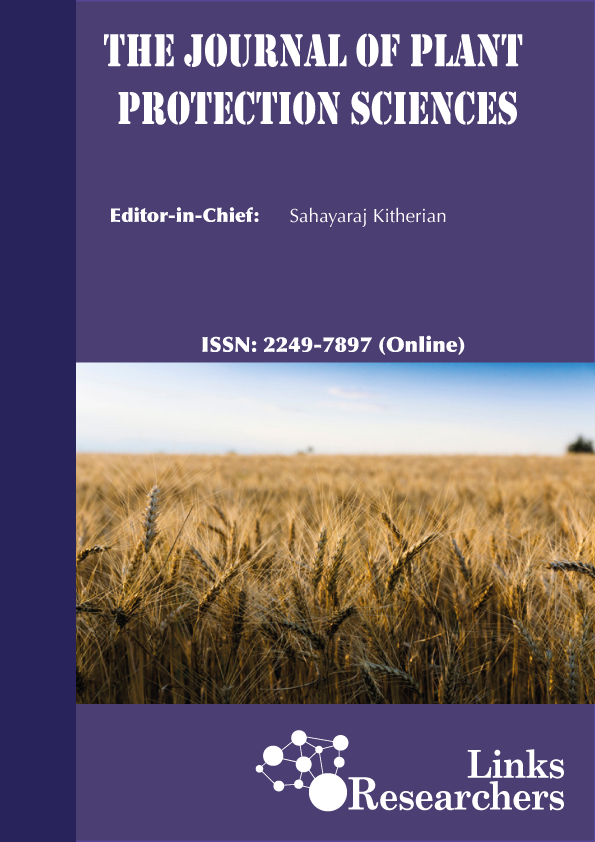Halide Nihal Açikgöz1*, Serdal Kenan Köse2 and Ali Açikgöz3
Ali Murad Rahoo1,2, Tariq Mukhtar3,*, Simon R. Gowen1, Rehana Kanwal Rahoo4 and Shaukat Ibrahim Abro5
Zain-ul-Aabdin Abro1*, Naheed Baloch1, Niaz Hussain Khuhro2, Waseem Akbar Qazi2, Noor Abid Saeed3
1N. Johnson Singh, 2Amitava Konar and 3Palash Mondal
M. S. A. Mamun and M. Ahmed
Addishiwot Fekdu, Afework Bekele and Demeke Datiko*
Gul Zamin Khan*, Imtiaz Ali Khan**, Inamullah Khan* and Mian Inayatullah**
Usman Zubair1*, Anjum Shehzad2, Muhammad Ishaque Mastoi3 and Khalid Mahmood1
Illahi Bux Bhatti1, 2*, Imran Khatri2, Maqsood Anwar Rustamani2 and Riffat Sultana3
Muneer Abbas1*, Muhammad Ramzan1, Niaz Hussain1, Abdul Ghaffar1, Khalid Hussain1, Sohail Abbas2 and Ali Raza3
Mahnoor Pervez and Farkhanda Manzoor*
Shah Nawaz Khuhro1*, Irshad Ali Junejo1, Muhammad Haroon Hullio1, Sultan Ahmed Maitlo2, Javeed Shabir Daar3 and Shahjahan Rajput1
Kiran Shahjeer1*, Gauhar Rehman1, Khurshaid Khan1 and Toheed Iqbal2
Syed Ismat Hussain1, Khalid Mehmood2, Mudassar Khaliq3, Habib Anwar1, Syed Muhammad Zaka4, Ateeq ur Rehman5*, Muhammad Shahid6, Syed Atif Hasan Naqvi5*, Ummad ud Din Umar5 and Muhammad Asif Zulfiqar7
Aiman Amur1*, Nasreen Memon1, Pervaiz Khan2 and Fozia Gull3
Abbas M. Al-Azab1*, Ahmed A. Zaituon2, Khalid M. Al-Ghamdi3, Fahd M. Abd Al Galil4,5
Arshad Ali Lashari1, Shakal Khan Korai1*, Imtiaz Ahmed Nizamani1, Khalid Hussain Qureshi1, Abdul Mubeen Lodhi1, Amir Khan Korai1 and Punhoon Khan Korai2*
Muneeb M. Musthafa1,* and Fauziah Abdullah1,2,3
Tarık Bugra Saruhan and Alptug Sarı*
Jae-Kang Lee, Hyun-Su Hwang, Tae-Kyung Eom, Dong-Ho Lee and Shin-Jae Rhim*
Khalid Hussain1, Muneer Abbas1*, Niaz Hussain1, Muhammad Irshad1, Mudassar Khaliq1, Zubeda Parveen1, Sohail Abbas2, Ali Raza3 and Abdul Ghaffar1
Khalid Hussain1, Muneer Abbas1*, Niaz Hussain1, Muhammad Irshad1, Mudassar Khaliq1, Zubeda Parveen1, Sohail Abbas2, Ali Raza3 and Abdul Ghaffar1
Mushtaq Hussain Soomro1, Jan Muhammad Mari1, Imtiaz Ahmed Nizamani1, Arfan Ahmed Gilal2* and Muhammad Ibrahim Kubar2
A. M. Rahoo1, 2, †, T. Mukhtar3, B. A. Bughio4, S. R. Gowen1 and R. K. Rahoo5
Aiman Amur1*, Nasreen Memon1, Khalida Unar2 and Roshan Jamali3
Tae-Kyung Eom1, Jae-Kang Lee1, Dong-Ho Lee1, Ho-Kyoung Bae1, Hyeongyu Ko1, Kyu-Jung Kim1, Sung-Cheol Jung2, Jong-Hwan Lim2 and Shin-Jae Rhim1*
Asif Sadam1*, Rahmat Ullah Khan2, Karim Gabol2*, Muhammad Awais3,4, Mohammad Ismail1, Sajid Mahmood1, Muhammad Aslam4 and Hamidullah5
Imran Nadeem1, Qurban Ali1, Muhammad Kamil Malik1*, Asad Aslam1, Imran Tariq2, Muhammad Bilal Bin Iqbal1, Muhammad Faheem Akhtar1, Sikander Ali3, Muhammad Jawad Saleem1, Muhammad Zubair3 and Aqsa Abbas1
Mubashar Hussain*, Habiba Razaq, Muhammad Faheem Malik, Kiran Aftab, Jaweria Riaz and Somia Liaqat
M. Tariq Mushtaq1, Faisal Manzoor1, M. Ishtiaq1*, Mirza Abdul Qayyum1, Muqarrab Ali2, M. Akram3, M. Rafiq Shahid3 and Saleem Riaz1
Vladimir Vasilievich Shimalov
Xin Niu1, Xuelan Fang2, Sang Ba3, Yihao Fang1,4, Davide Fornacca1,7, Kun Tan1,4, Yanpeng Li1,4,5*, Zhipang Huang1,4,5* and Wen Xiao1,4,5,6,7
Bilal Atta1*, Arshed Makhdoom Sabir1, Muhammad Dildar Gogi2, Muhammad Asif Farooq3, Muhammad Ijaz1, Tahir Hussain Awan1, Muhammad Ahsin Ayub4, Muhammad Usman Saleem1, Amara Nasiba1
Naveed Akhtar, Hafiz Muhammad Tahir*, Azizullah, Aamir Ali
Featuring
-
Investigating the Efficacy of Various Plant Essential Oils in Controlling Red Flour Beetle, Tribolium castaneum (Coleoptera: Tenebrionidae)
Muhammad Irfan Ullah, Khadija Akram, Abu Bakar Muhammad Raza, Muhammad Arshad, Samina Khalid, Hamza Latif, Aqsa Amjad, Nahdia Perveen, Emaan Sajid
Punjab University Journal of Zoology, Vol.39, Iss. 1, Pages 61-67
-
Preliminary Assessment of Newly Developed Escherichia coli Mastitis Vaccines in Laboratory Animals: Promising Results
Saira Jabeen, Muhammad Avais, Jawaria Ali Khan, Kamran Ashraf, Aftab Ahmad Anjum
Punjab University Journal of Zoology, Vol.39, Iss. 1, Pages 53-60
-
Assessment of Various Biochar Sources as a Dietary Additive in Cirrhinus mrigala Fingerlings to Enhance Mineral Status, Carcass Composition, and Antioxidant Activity
Muhammad Adnan Khalid, Syed Makhdoom Hussain, Shafaqat Ali, Abdullah Ijaz Hussain, Muhammad Asrar, Nisar Ahamd, Majid Hussain and Muhammad Zubair-ul-Hassan Arsalan
Punjab University Journal of Zoology, Vol.39, Iss. 1, Pages 45-52
-
Biodiversity, Seasonal Abundance, and Population Dynamics Assessment of Coccinellidae (Coleoptera) from Maize Crops
Naveed Akhtar, Hafiz Muhammad Tahir, Azizullah, Aamir Ali
Punjab University Journal of Zoology, Vol.39, Iss. 1, Pages 33-44
Subscribe Today
Receive free updates on new articles, opportunities and benefits

© 2024 ResearchersLinks. All rights Reserved. ResearchersLinks is a member of CrossRef, CrossMark, iThenticate.








